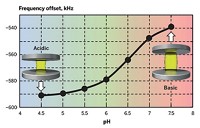Advertisement
Grab your lab coat. Let's get started
Welcome!
Welcome!
Create an account below to get 6 C&EN articles per month, receive newsletters and more - all free.
It seems this is your first time logging in online. Please enter the following information to continue.
As an ACS member you automatically get access to this site. All we need is few more details to create your reading experience.
Not you? Sign in with a different account.
Not you? Sign in with a different account.
ERROR 1
ERROR 1
ERROR 2
ERROR 2
ERROR 2
ERROR 2
ERROR 2
Password and Confirm password must match.
If you have an ACS member number, please enter it here so we can link this account to your membership. (optional)
ERROR 2
ACS values your privacy. By submitting your information, you are gaining access to C&EN and subscribing to our weekly newsletter. We use the information you provide to make your reading experience better, and we will never sell your data to third party members.
Analytical Chemistry
Colorful Magnetic Resonance Imaging
June 23, 2008
| A version of this story appeared in
Volume 86, Issue 25
Microengineered magnetic particles could bring color to traditionally gray-scale magnetic resonance imaging (MRI), U.S. government scientists report (Nature 2008, 453, 1058). Gary Zabow of NIST and NIH and coworkers created various magnetic microstructures with geometries that produce distinct radio-frequency signatures. Those signatures can be converted into a rainbow of optical colors on a computer screen. Traditional MRI contrast agents are chemically synthesized metal complexes with paramagnetic properties. These agents alter the magnetic field surrounding hydrogen nuclei in water, but not in a way that easily enables distinguishing between different types of tissues. The researchers designed nickel particles to have an open, double-disk sandwich structure, which they created with conventional microfabrication techniques. Each particle type is slightly different—for example, having a thicker disk or a wider gap—to create a customized magnetic field that effectively yields a specific color that can be associated with particular tissues. The researchers say much work must be done before these sensitive and tunable particles can be routinely used in people.






Join the conversation
Contact the reporter
Submit a Letter to the Editor for publication
Engage with us on Twitter